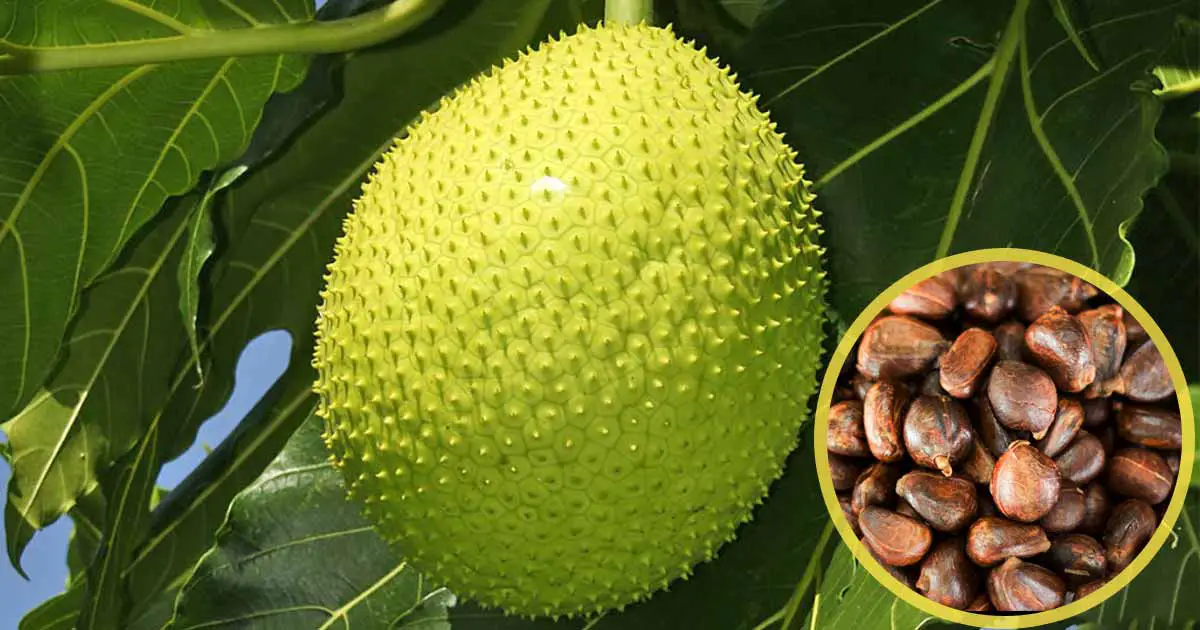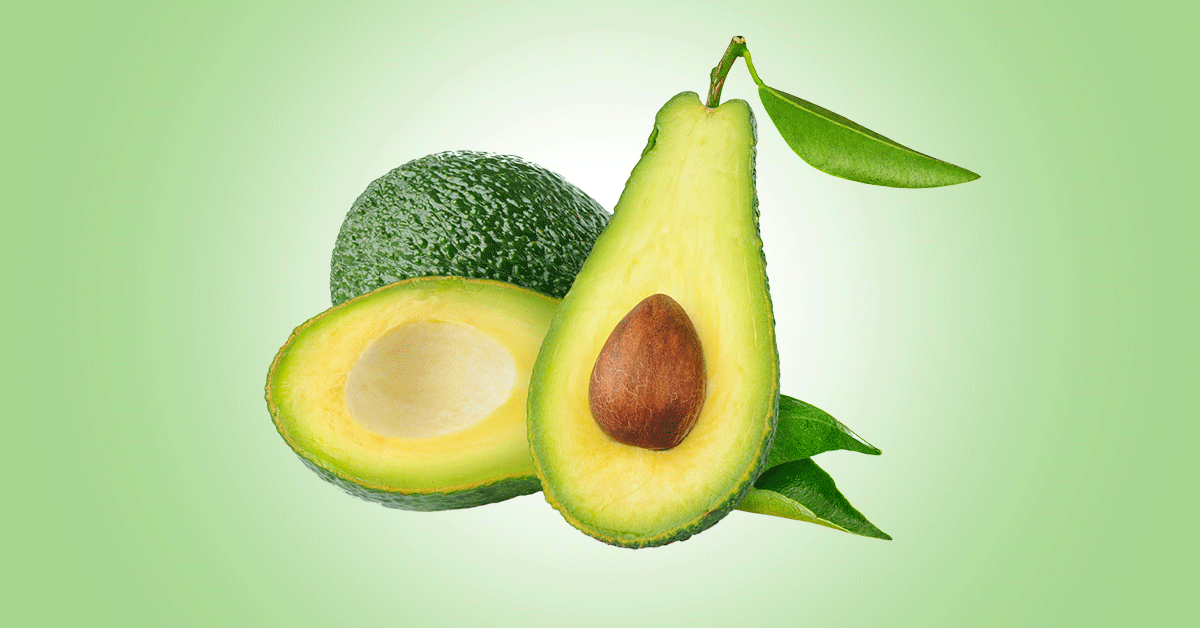Breadnut (Artocarpus camansi Blanco) is sometimes considered as a seeded breadfruit. However, it is a separate species, and the ancestor of both seeded and seedless breadfruit. They all belong to the Moraceae family alongside fig, mulberry. The most important commercial plants of the Artocarpus species are jackfruit, breadfruit, and breadnut.
Breadfruit tree can grow up to 20 m height, and forms buttresses at the base of the trunk. The leaves are large, moderately dissected, with up to 6 lobes. The fruit, which is a syncarp, has an oblong shape, and is spiky, green to greenish-brown when ripe. Breadfruit has a fibrous core with 50 to 100 nut-like seeds embedded in a white, flaky and spongy-like pulp. Seeds are large, rounded, or flattened, with light brown outer seed coat, and are numerous. The plant is propagated by seeds.
The fruit is highly perishable after harvest, with a shelf life of 2 days under ambient condition. Two days after harvest, it develops a soft texture, the flesh changes from white to light yellow, and the milky-white seed forms a brown net-like hard rind.
Breadnut is native to New Guinea, the Moluccas (Indonesia) and the Philippines. It is now grown in tropical regions in the Philippines, Hawaii, Tahiti, Palau, New Caledonia, the Caribbean, Central and South America, Southeast Asia, and West Africa.
Common names of breadnut include kos del (Sri Lanka), castaña (Spanish), kapiak (New Guinea), chataigne (Caribbean), kelur, kulor, kulur, kuror, timbul (Indonesia, Malaysia), and castaña (Spanish).
Breadnut has good flavor, high fiber, complex carbs and can be used in many ways. It is mostly consumed when immature. It is sliced and boiled as a vegetable in soups or stews. Breadnut can also be roasted, can be canned in brine, or made into nut butter or nut paste, flour, or oil.
It is also used in traditional medicine to treat liver diseases, while the leaves can be used to heal cirrhosis, diabetes, and hypertension.
Differences between breadfruit and breadnut
The major difference between the two is that breadnut fruit has a soft spine on the surface, and possesses numerous achene while breadfruit do not possess achene (usually referred to as seedless).
Composition of Breadnut Seed
Drying the fresh seed of breadnut increase the nutritional compositions significantly.
According to USDA data, a 100g of dried breadnut seed contains 6.5 g of water, 8.62 g of proteins, 3.81 g of ash, 1.68 g of fats, 79.4 g of carbohydrates, 367 kcal of energy, and 14.9 g of dietary fiber.
Minerals: Potassium (2010 mg) is the most abundant mineral, followed by phosphorus (178 mg), magnesium (115 mg), calcium (94 mg). Others elements include zinc, sodium, copper, manganese, selenium, and iron.
Vitamins: vitamin C (46.6 mg), vitamin A, folate (113 µg), vitamin B-6, thiamine, riboflavin, niacin, and pantothenic acid.
There are fatty acids, and amino acids. The main amino acid constituents include glutamic acid, aspartic acid, leucine, arginine, valine, tyrosine, and glycine.
Fatty acids include saturated fatty acids (palmitic, lauric, and stearic acid) and unsaturated fatty acid such as oleic, linolenic and arachidonic acid.
The fats extracted from the seed of the breadnut is a light yellow, viscous liquid at room temperature, with peanut-like odor. It has similar properties like olive oil.
Breadnut has low levels of organic acids such as butyric, acetic, malic, lactic and citric acids, which means it spoils quickly.
Essential oils from the leaf extract of the plant include m-xylene, myristaldehyde, phytol, and ethyl benzene, while the stem-bark contains m-xylene, o-xylene, and ethyl benzene.
The nut oil contains lanosteryl acetate, olean-12-en-3y acetate, 24-methylene cycloartenol, m-xylene, and squalene.
Benefits of Breadnut seeds
Breadnut has more protein and fewer fats compared to other nuts such as almond, and Brazilian nut. It also has more niacin content.
Antioxidants:
Bread nut contains prenylated flavonoids and xanthones which are natural antioxidants. These compounds scavenge free radicals and prevent cardiovascular diseases and degenerative conditions.
The highest antioxidant effect was exhibited by the methanolic extract of breadnut seed, followed by pulp and core.
Weight control:
Breadnut flour has good dietary fiber and no cholesterol. It can serve as a wheat substitute in baked products.
High dietary fiber:
Bread nut has high dietary fiber, which helps to promote digestive health. Dietary fiber helps bowel movement, keeps the digestive system clean and prevent heart diseases, build up of lipids.
Blood pressure lowering:
Breadnut has amino-butyric acid in the yellow leaves. It helps to improve blood pressure. The seeds also contain potassium and magnesium, two minerals that also helps in lowering of blood pressure and improving blood circulation.
Prevents inflammatory conditions:
Breadnut is rich in histidine, an amino acid which is used to treat inflammatory condition like rheumatoid arthritis.
Toothache relief:
In traditional medicine, the flowers are roasted in Java and applied to inflammed gum to relieve toothache.
References
- https://www.sciencedirect.com/science/article/abs/pii/B9781845697341500133
- https://fdc.nal.usda.gov/fdc-app.html#/food-details/170552/nutrients
- https://www.tandfonline.com/doi/full/10.1080/15538362.2020.1828222
- https://apps.worldagroforestry.org/treedb/AFTPDFS/Artocarpus_camansi.PDF
- https://jhpr.birjand.ac.ir/article_1538_1ae0eae6cb4a5d3fcd74719bb7e274c0.pdf












